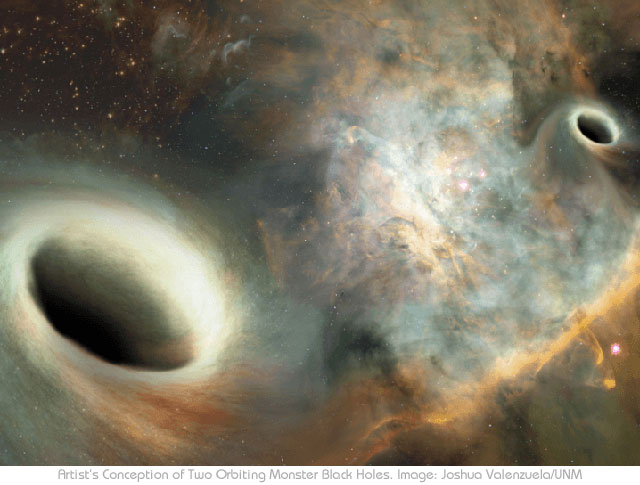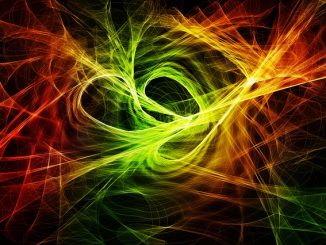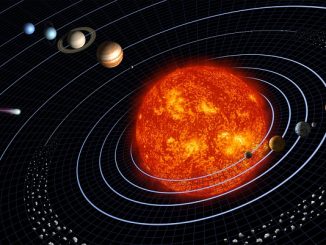
Capping off a 12-year study period, astronomers at The University of New Mexico experienced a rare treat as they were able to observe and measure for the first time the orbital movement between a pair of supermassive black holes (SMBH) located around 750 million light years from Earth, inside galaxy 0402+379 — named after the pair of galaxies that have just recently merged to form it.
Using the National Science Foundation’s Very Long Baseline Array (VLBA) — an extremely powerful radio telescope system made up of 10 radio telescopes that span across the U.S. — the research team was able to observe the radio signals coming from the SMBHs, to the point that they were able to plot their trajectories and ultimately confirm that they were in orbit with one another, or technically, they were part of a ‘visual binary system’.
According to the team, the SMBHs have a combined mass of 15 billion solar masses, meaning, the pair is 15 billion times as massive as our sun. At that size, they are estimated to have an orbital period of 24,000 years. To put that in perspective, one of the team members — Professor Roger Romani of Stanford University — likened the motion to that of a snail. He said: “If you imagine a snail on the recently-discovered Earth-like planet orbiting Proxima Centauri – 4.243 light years away – moving at 1 cm a second, that’s the angular motion we’re resolving here.”
Considering the distance of the SMBHs and that comparison, detecting their movement can be considered a ‘true technical achievement’ and a ‘triumph in technology’ that wouldn’t have been possible if not for the superior precision and resolution of the VLBA.
Going beyond this amazing technological feat, however, it should be noted that the discovery is significant because it could help us learn more about the universe and the fate of galaxies, especially our own. Currently, our own Milky Way is on a direct collision path with Andromeda, which happens to have its own SMBH in its center. It’s exactly comparable with what the team is observing, which means whatever happens there might be the same thing that will happen with our galaxy later on.
Astronomers believe that large galaxies usually have supermassive black holes at their core, and that if such large galaxies merge, their respective black holes will eventually merge as well. Based on this notion, the team thinks that if the black holes are indeed orbiting as their movement suggests, it could be an ‘intermediary stage’ that’s part of the merging process. At the rate the pair of black holes are moving, however, they also think that they’re too distant to unite within the approximate remaining age of the universe, unless some kind of external force enters into the picture and somehow accelerates the process.
The team intends to make another observation in 3 or 4 years so they can verify the orbital motion and hopefully obtain a more precise orbit or trajectory.
The research was recently published in The Astrophysical Journal.
- Bulenox: Get 45% to 91% OFF ... Use Discount Code: UNO
- Risk Our Money Not Yours | Get 50% to 90% OFF ... Use Discount Code: MMBVBKSM
Disclaimer: This page contains affiliate links. If you choose to make a purchase after clicking a link, we may receive a commission at no additional cost to you. Thank you for your support!




The blackholes look a lot like the eye of a hurricane or tornado and powerfully suck everything in/about its path like a centrifugal pump. It remains to be seen as to how much of the observed behaviour of these black holes follow the behaviour predicted by scientists from the times of Hoyle and Hawking particularly with reference to death of time.